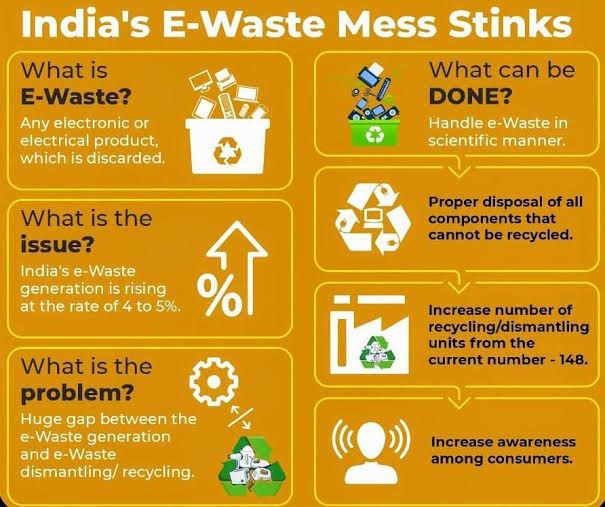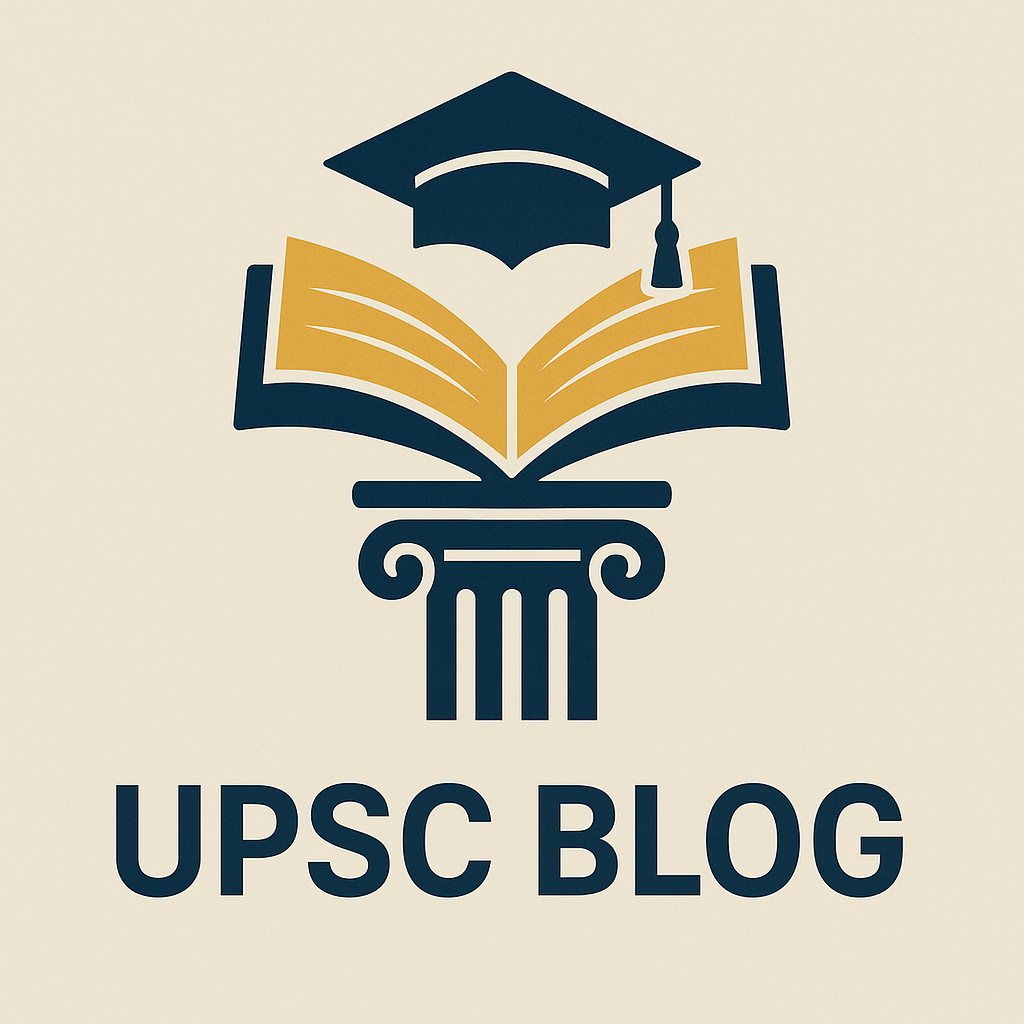INDIA’S E-WASTE MANAGEMENT CRISIS
## 1️⃣ Context & Background: Digital Growth vs. Waste Generation
### 🌐 India’s Digital Expansion:
* India is undergoing a digital revolution — integrating electronic devices across personal, professional, and industrial domains.
* Devices like smartphones, laptops, medical instruments, and industrial machinery are now core to development.
* This boom has, however, resulted in a proportional increase in electronic waste (e-waste).
### 📊 E-Waste Growth Data:
| Year | E-Waste Generated (Metric Tonnes) |
| ————— | ——————————— |
| 2017-18 | 7,08,445 |
| 2023-24 | 17,78,400 |
| % Growth | 151.03% |
| Annual Increase | 1,69,283 MT/year |
🔺 Insight:
India’s e-waste generation is growing at an alarming rate, with no equivalent increase in formal recycling infrastructure.
—
## 2️⃣ Nature & Risks of E-Waste
### ☠️ Environmental Hazards:
* E-waste contains toxic metals (lead, mercury, cadmium), plastic polymers, and acidic chemicals.
* Improper disposal methods like open-air burning, acid baths, and landfilling cause:
* Water pollution (cyanide, sulphuric acid)
* Air pollution (lead fumes, burning plastic)
* Soil toxicity (persistent heavy metals)
### 💸 Economic Losses:
* ₹80,000 crore/year in lost valuable metals (due to rudimentary extraction)
* \$10 billion/year due to environmental degradation
* \$20 billion/year in lost social and economic productivity
* \$20 billion/year in lost tax revenue (unregistered sector)
### 👨👩👧 Social Impact:
* The informal sector handles 95% of e-waste, often using untrained women and children.
* Result: average lifespan drops below 27 years due to exposure to toxic substances.
* This is not just an environmental problem, but a human rights crisis.
—
## 3️⃣ Current Framework: Extended Producer Responsibility (EPR)
### 📋 What is EPR?
* Policy tool making producers, importers, and brands responsible for the end-of-life waste from their products.
* It shifts the burden of waste from government to the product’s originator.
* Goals:
* Sustainable product design
* Proper lifecycle waste disposal
* Financial incentives for recovery and recycling
### 📉 Gap in Implementation:
* EPR exists on paper, but:
* Enforcement is weak
* Recyclers are underpaid
* Informal sector dominates due to cost advantage
* Producers bypass obligations via uncertified recyclers
—
## 4️⃣ Key Structural Weakness: Lack of Floor Pricing
### 🧾 Floor Price under 2022 Rules:
* Introduced to ensure minimum compensation for formal recyclers via EPR certificates.
* Objective: make formal recycling financially viable, reduce dependency on informal sector.
### 🔄 What Happens Without Floor Price:
* Market manipulation of certificate pricing
* Collapse of recycler incentives
* Rise of bogus recyclers and “paper compliance”
* Producers opt for cheaper, informal options, negating EPR
### ✅ How Floor Price Helps:
| Benefit Type | Impact |
| ——————– | —————————————————————- |
| Economic | Predictable revenue, ROI for recyclers, investment in technology |
| Environmental | Focus on recovery, not disposal; reduced dumping and pollution |
| Social | Safer work conditions, reduction in child/women exploitation |
| Circular Economy | Unlocks critical materials (gold, copper), reduces imports |
—
## 5️⃣ Comparative Insight: Global Practices vs. India

